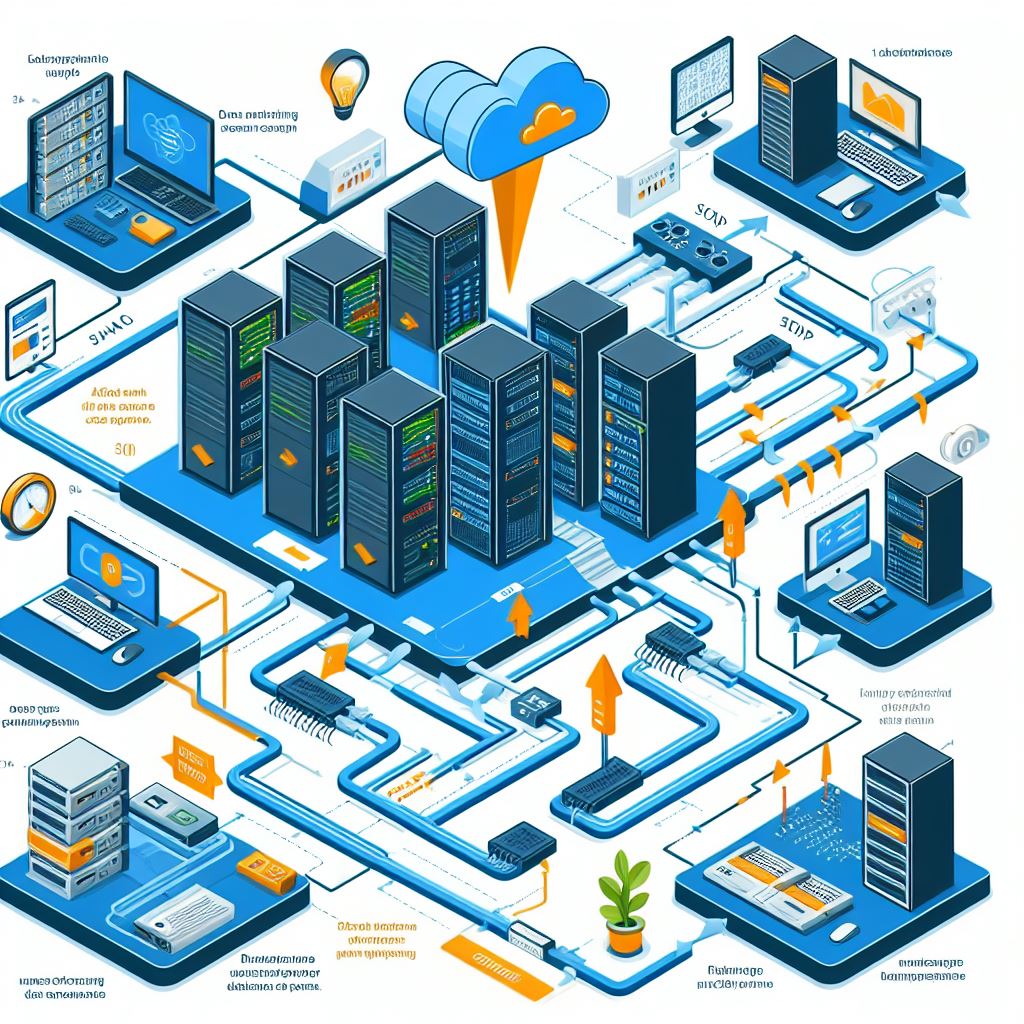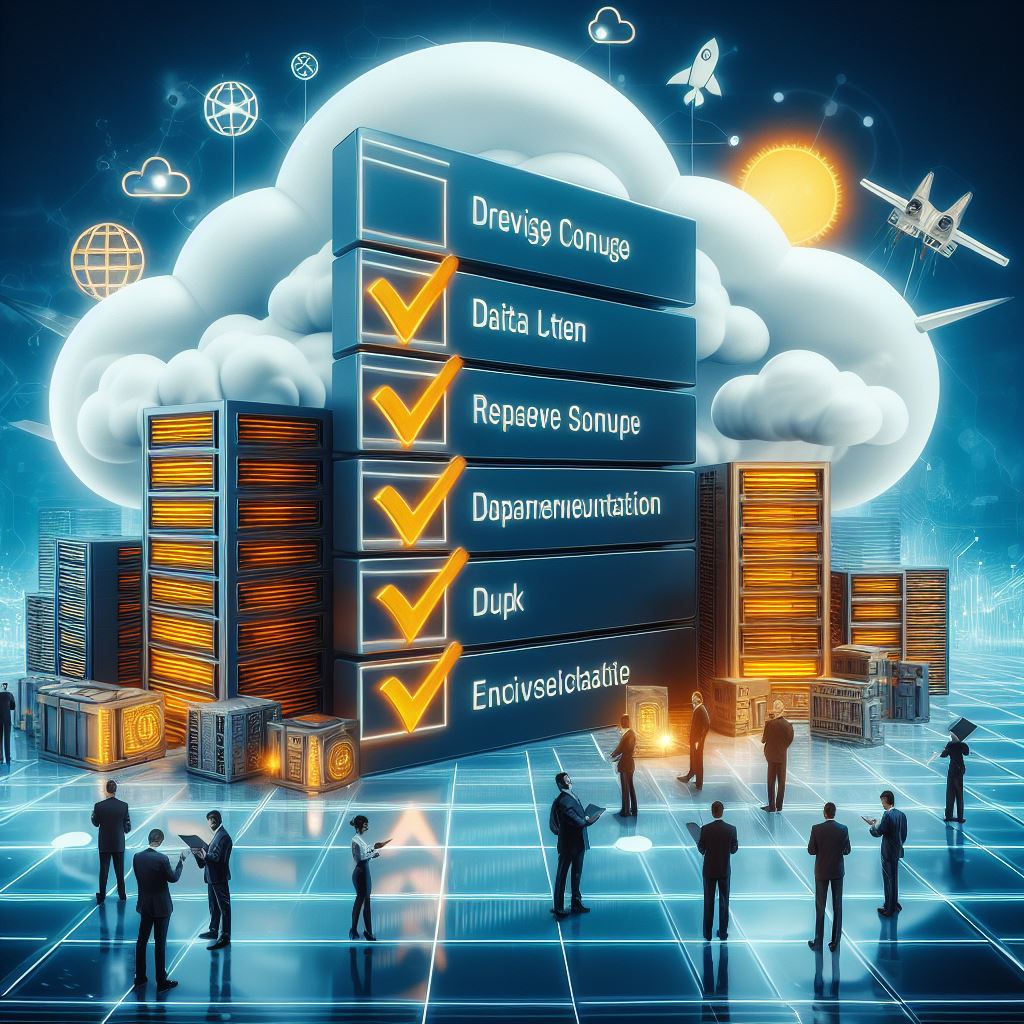As businesses continue to embrace the benefits of cloud computing, the process of migrating data centers to the cloud has become increasingly crucial. However, data center migration is a complex and intricate process that requires meticulous planning and execution to ensure a seamless transition. To facilitate this critical undertaking, an ultimate checklist is indispensable.
This comprehensive checklist encompasses all essential aspects of data center migration to the cloud, including infrastructure assessment, resource allocation, security considerations, and contingency planning. By adhering to this all-encompassing checklist, organizations can navigate the challenges of data center migration with confidence and efficiency, ultimately reaping the full benefits of cloud computing. Let’s delve into the ultimate data center migration to the cloud checklist and understand how it can optimize your migration process.
Contents
- 1 Understanding Data Center Migration
- 2 Developing a Data Center Migration Strategy
- 3 Selecting a Cloud Provider for Migration
- 4 Managing Data Migration Process
- 5 Ensuring Successful Data Center Relocation
- 6 Frequently Asked Questions [FAQs]
- 6.1 Q: What is a data center migration checklist, and why is it important?
- 6.2 Q: What are the best practices for data center migration?
- 6.3 Q: What are the key steps involved in a successful data center migration?
- 6.4 Q: What tools can be used for data center migration?
- 6.5 Q: How can I ensure a successful cloud migration using a checklist?
- 6.6 Q: What are the common challenges faced during data center migration?
- 6.7 Q: What are the consequences of not following a data center migration checklist?
- 6.8 Q: How can I minimize downtime during a data center migration?
- 6.9 Q: What are the critical components of a project plan for data center migration?
- 6.10 Q: How can I ensure successful cloud adoption through data center migration?
- 7 Conclusion
Understanding Data Center Migration

Data center migration involves the process of moving data, applications, and other business components from one data center to another or to a cloud environment. The typical steps of a data center migration process include assessing the current data center setup, planning the migration, executing the migration, and validating the migration to ensure a seamless transition.
It is essential to consider the best practices for successful data center migration. This includes creating a detailed migration checklist, assessing the dependencies of the data center environment on the new location or cloud system, and ensuring minimal downtime during the migration process.
To minimize downtime during data center migration, it is crucial to plan and execute the migration in phases, prioritize critical workloads, conduct thorough testing, and have contingency plans in place to address any unforeseen issues that may arise during the migration.
Developing a Data Center Migration Strategy
When developing a data center migration strategy, it is important to have a comprehensive migration checklist that includes all the necessary steps and considerations for a successful migration. This includes assessing the current data center environment, identifying the workloads and applications to be migrated, evaluating the interdependencies between different components, and defining the migration timeline and resources required for the migration project.
Creating a project plan for data center migration involves collaborating with key stakeholders, establishing clear communication channels, and setting realistic goals and milestones for the migration process. It is also essential to conduct risk assessments and define mitigation strategies to address any potential challenges during the migration.
Key considerations in migrating a data center to a new location include evaluating the physical space and infrastructure, assessing the network and connectivity requirements, ensuring data and application compatibility with the new environment, and planning for data migration to the new location while maintaining data integrity.
Selecting a Cloud Provider for Migration

Choosing a suitable cloud service provider for data center migration involves considering essential criteria such as the provider’s reliability, security measures, scalability, performance, and cost-effectiveness. It is important to assess the dependency of the current data center environment on the new cloud system and ensure that the selected cloud provider can meet the specific requirements of the migration project.
When creating a migration plan for the cloud, it is crucial to consider various resources, including the migration tools, data migration services, cloud storage options, network bandwidth, and security protocols, to ensure a smooth and efficient migration process from the data center to the cloud environment.
Assessing the dependency of the data center environment on the new cloud system entails identifying the interdependencies between different applications, databases, and infrastructure components and ensuring compatibility and seamless integration in the new cloud environment.
Managing Data Migration Process
Several tools are available for efficient data migration to the cloud, including data migration software, cloud-based migration services, and data transfer appliances. These tools facilitate the secure and seamless transfer of data and applications from the existing data center to the new cloud environment, ensuring minimal data loss and maintaining data integrity.
To ensure the successful migration of workloads and servers to the new data center location or cloud environment, it is important to conduct thorough testing, performance monitoring, and validation of the migrated data and applications. This includes verifying data consistency, application functionality, and optimal performance in the new environment.
Key factors for a seamless data migration process include meticulous planning, effective coordination between the IT teams and stakeholders, conducting comprehensive data validation and testing, and implementing robust data protection mechanisms throughout the migration process.
Ensuring Successful Data Center Relocation

To minimize risks and maintain data integrity during data center relocation, it is essential to implement stringent data protection measures, conduct regular backups, and establish failover and recovery procedures to mitigate any potential data loss or system downtime. It is also crucial to involve data migration as part of a comprehensive data center migration plan, considering the critical interdependencies between different components and applications.
Including data migration as part of a comprehensive data center migration plan involves assessing the data migration requirements, defining the migration scope, ensuring data consistency and integrity, and planning for any necessary data transformations or adaptations to fit the new environment seamlessly.
Best practices for a successful data center relocation include comprehensive risk assessment, meticulous planning, effective communication and coordination, thorough validation and testing, and establishing robust contingency plans to address any unforeseen challenges. This ensures a smooth and successful data center relocation with minimal disruption to business operations.
Frequently Asked Questions [FAQs]
Q: What is a data center migration checklist, and why is it important?
A data center migration checklist is a detailed list of tasks and considerations required for a successful migration of data and systems from one data center to another or to the cloud. It is important because it helps ensure that all necessary steps are taken to minimize risks and downtime during the migration process.
Q: What are the best practices for data center migration?
Best practices for data center migration include thorough planning, assessing the current environment, setting clear objectives, ensuring data integrity, testing the migration plan, and implementing a rollback plan in case of unforeseen issues.
Q: What are the key steps involved in a successful data center migration?
The key steps for a successful data center migration include conducting an inventory of existing systems and data, assessing dependencies, creating a migration plan, testing the migration process, executing the migration, and conducting post-migration validation.
Q: What tools can be used for data center migration?
Various tools are available for data center migration, including cloud migration tools, data migration tools, and project management tools. These tools assist in assessing the current environment, planning the migration, and executing the migration process efficiently.
Q: How can I ensure a successful cloud migration using a checklist?
To ensure a successful cloud migration, a checklist should include considerations for data integrity, security, compliance, performance testing, and post-migration monitoring. It should also encompass clear communication and coordination among stakeholders.
Q: What are the common challenges faced during data center migration?
Common challenges during data center migration include data security concerns, downtime risks, compatibility issues with new infrastructure, application dependencies, and ensuring a seamless transition without impacting business operations.
Q: What are the consequences of not following a data center migration checklist?
Not following a data center migration checklist can lead to data loss, system downtime, increased risk of errors and security vulnerabilities, operational disruptions, and potential financial losses due to business interruption.
Q: How can I minimize downtime during a data center migration?
Minimizing downtime during data center migration involves thorough planning, conducting impact assessments, implementing a phased migration approach, and leveraging technologies such as live migrations, failover mechanisms, and load balancing to ensure continuous service availability.
Q: What are the critical components of a project plan for data center migration?
A project plan for data center migration should include clear objectives, resource allocation, risk management strategies, communication plans, testing protocols, a rollback plan, and documentation for tracking progress and addressing potential issues.
Q: How can I ensure successful cloud adoption through data center migration?
Successful cloud adoption through data center migration requires a comprehensive checklist that encompasses considerations for security, compliance, performance, scalability, cost management, and aligning the migration with long-term business objectives.
Conclusion
In today’s digital age, migrating your data center to the cloud is no longer a luxury but a necessity. With the ultimate data center migration to cloud checklist, you can ensure a smooth and efficient transition. This comprehensive guide will help you avoid common pitfalls and maximize the benefits of the cloud. From cost savings and scalability to improved security and flexibility, the advantages of cloud migration are numerous. So, don’t wait any longer. Start planning your data center migration to the cloud today and unlock the full potential of your business. The ultimate data center migration to cloud checklist awaits you!





